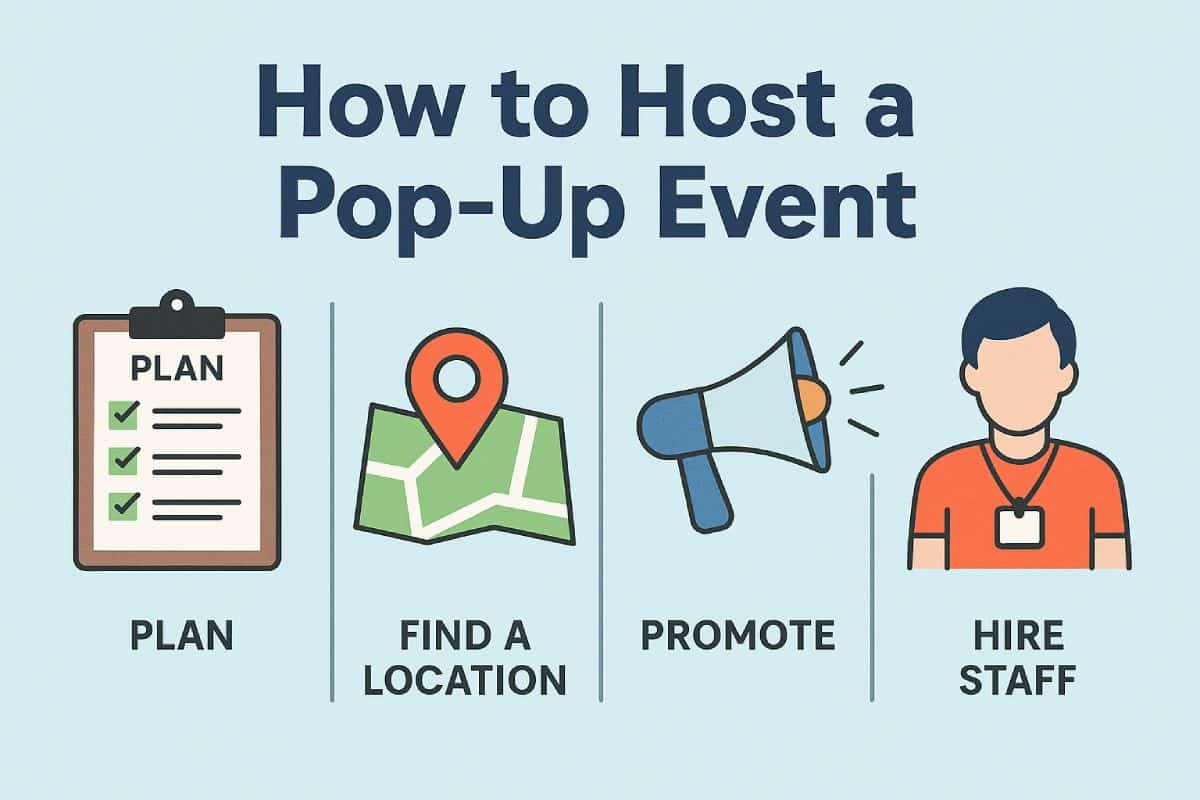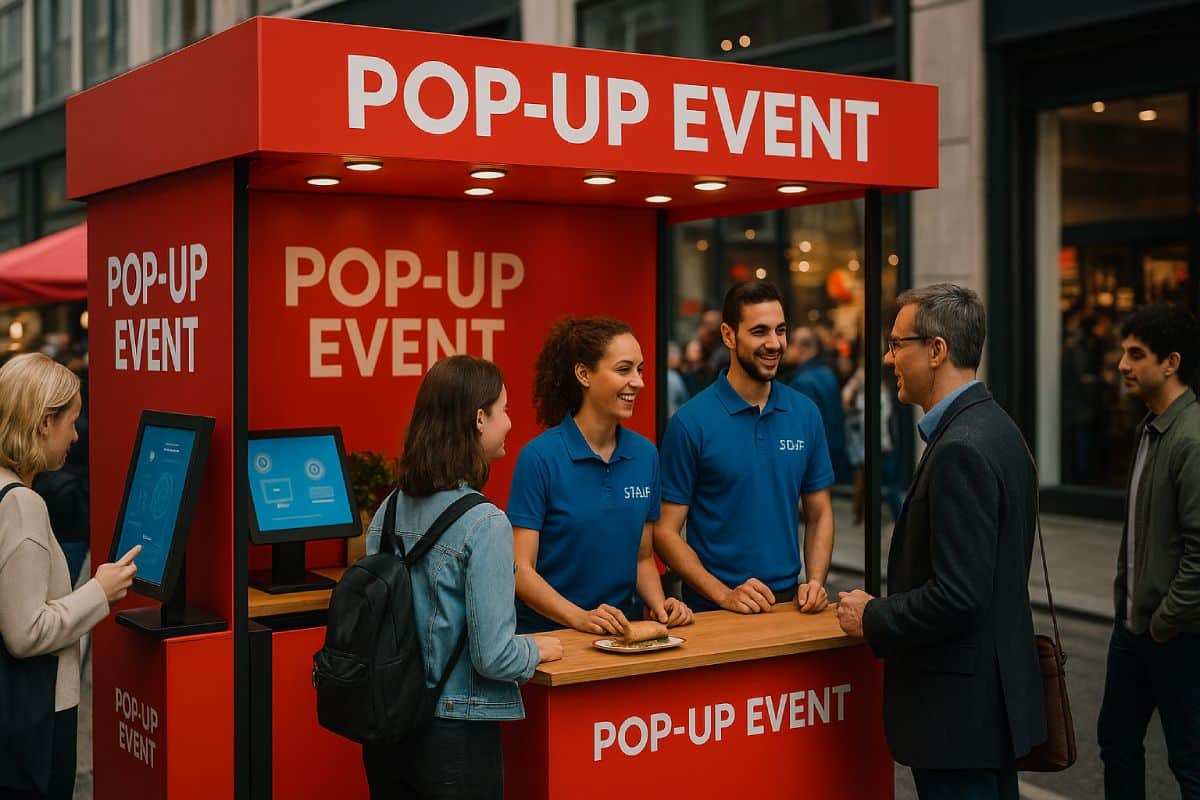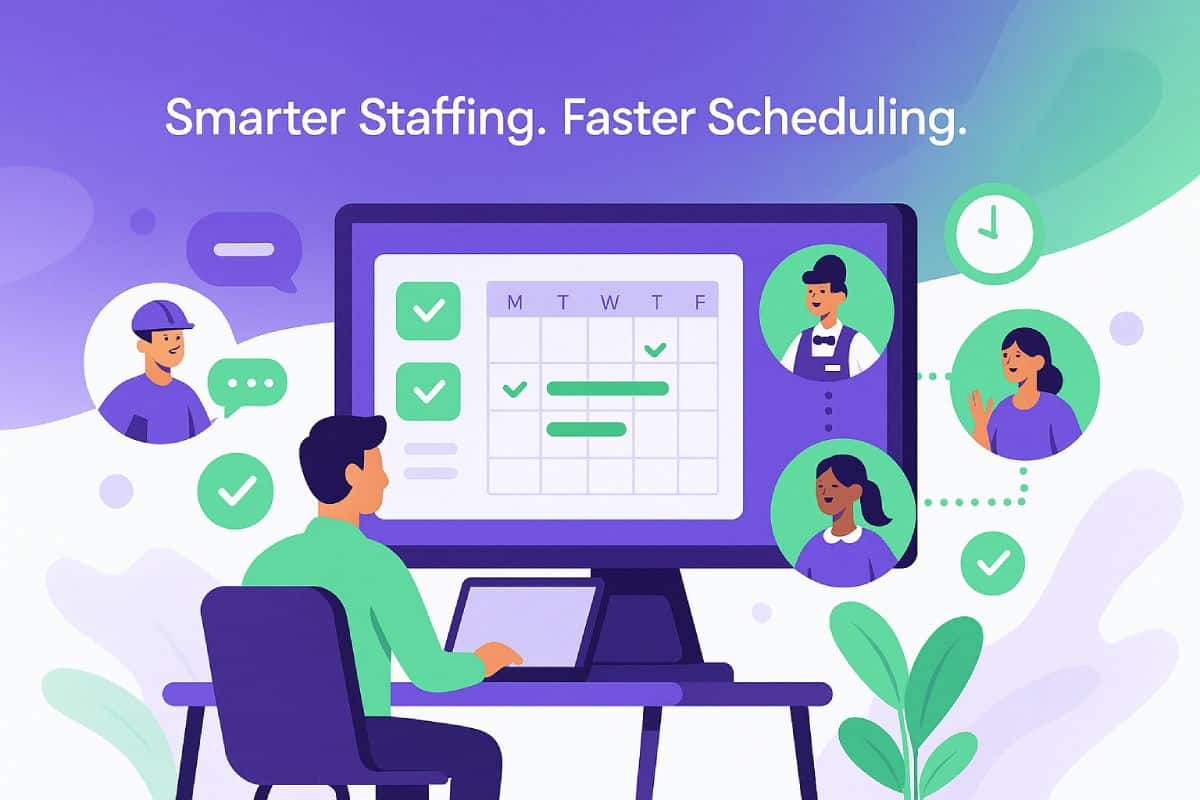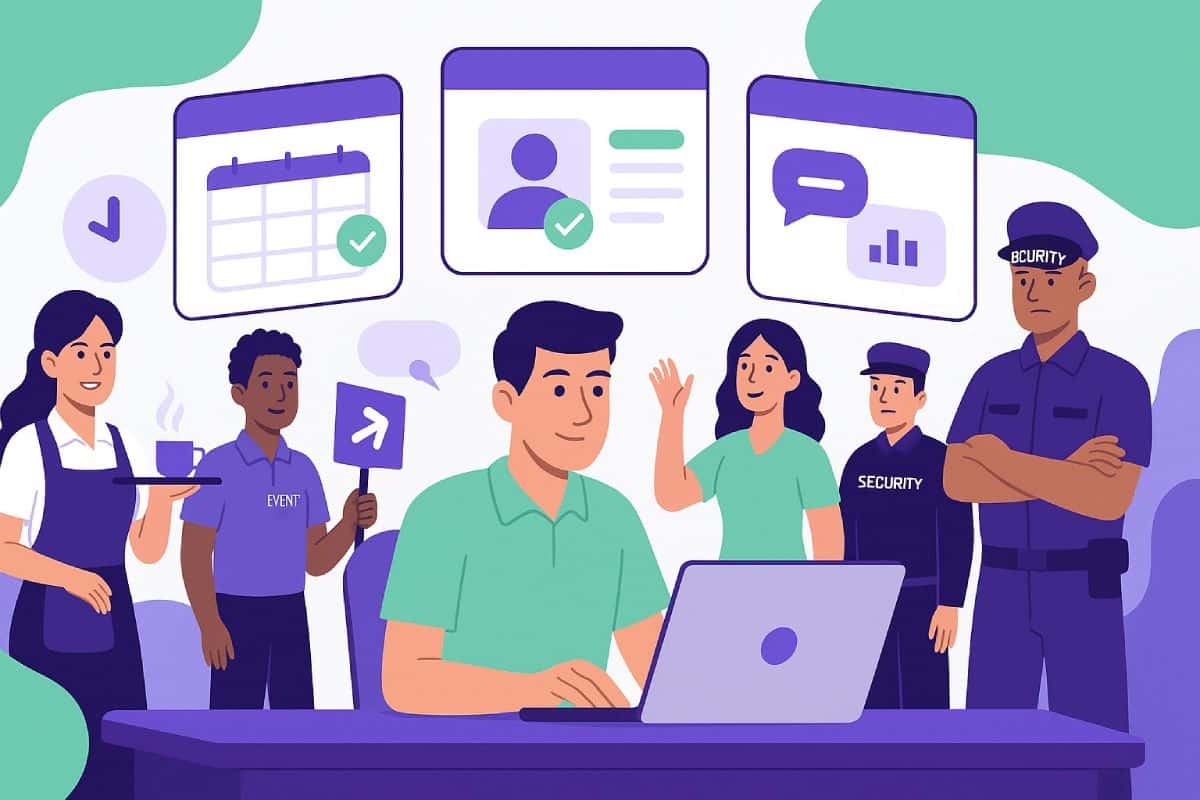Pop up events are transforming how brands connect with customers. In this guide, we explain what a pop up event is, why they matter, how to plan and host them successfully, and how Liveforce can help you staff them seamlessly.
By the end, you will have the insights and practical steps to deliver a standout pop up experience that attracts attention, engages audiences, and runs smoothly.
What is a Pop Up Event?
A pop up event is a temporary retail or experiential activation designed to create buzz, test ideas, or showcase products.
They are short-lived but high-impact, often appearing for just a few days or weeks in unexpected locations. From pop up shops to food stalls and interactive brand experiences, these events combine creativity with immediacy.
Pop up retail, also known as flash retailing, started in Los Angeles and quickly spread globally. In the UK alone, pop up events contributed an estimated £2.3 billion to the economy in 2015 and continue to grow in value. Today, brands of all sizes use them to connect with customers in new and engaging ways.
Why Pop Up Events Matter for Brands
Pop up events are more than a marketing trend — they are a proven strategy for brand growth. Here’s why:
- Test products before scaling: Brands can trial new offerings with limited investment.
- Engage new audiences: Pop ups help companies reach fresh demographics quickly.
- Create memorable experiences: Attendees are more likely to remember and share unique events.
- Generate media coverage: Journalists and influencers are drawn to creative, time-limited activations.
- Drive direct sales: Some pop ups sell products, while others focus on awareness or lead generation.
For agencies and event professionals, pop ups provide an exciting opportunity to deliver creative campaigns that stand out in a crowded market.
How to Plan and Host a Pop Up Event
Planning a pop up event requires precision and flexibility. Below are the core steps:
How to Do a Pop Up Event
Begin with your objective. Do you want to launch a product, celebrate a milestone, or gather customer feedback? Defining this will shape your entire strategy.
Once your goal is clear, brainstorm a theme or concept that matches your brand identity and resonates with your target audience.
How to Plan a Pop Up Event
Consider these essential elements:
- Permits and licences: Depending on the location and type of event, you may need permission from local authorities.
- Location: Choose high-traffic areas aligned with your audience, such as city centres, shopping hubs, or festivals.
- Suppliers and vendors: Secure partners early to avoid delays.
- Promotion: Plan a multi-channel campaign to ensure attendance.
- Budget: Allocate costs for staffing, marketing, production, and contingencies.
How to Organise a Pop Up Event
Coordination is key. A pop up event involves multiple moving parts: vendors, staff, marketing, compliance, and logistics. Using event staffing software like Liveforce helps keep crew scheduling organised, ensuring no shift gaps or communication breakdowns.
This makes the difference between a seamless event and one plagued by last-minute challenges.

Staffing for Pop Up Events
Staffing is often one of the most complex aspects of pop up events. Depending on the format, you may need:
- Brand ambassadors to represent your company and engage attendees.
- Hosts and hostesses for registration, greeting, and guest flow.
- Technicians to manage audio-visual or digital elements.
- Catering staff if food or drink is involved.
These roles may be required at short notice and across different shifts. Without efficient systems, agencies risk under- or overstaffing, poor communication, and unnecessary costs.
Liveforce provides solutions that simplify staffing for pop up events:
- Schedule crew instantly across multiple projects.
- Send real-time updates to staff via the mobile crew app.
- Track timesheets and payroll accurately to stay within budget.
- Ensure compliance by keeping worker documentation in one place.
With Liveforce, agencies have full visibility and control, while staff enjoy transparency and reliability. This reduces stress and improves the attendee experience.
Types of Pop Up Events
Pop ups can take many forms depending on your goal and audience. Here are common types:
How to Do a Pop Up Food Event
Food pop ups are highly popular but require special considerations:
- Food hygiene permits and health & safety compliance
- Refrigeration, preparation, and storage facilities
- Staff trained in catering and customer service
Food events work well at festivals, shopping centres, or as part of brand activations. They combine taste experiences with storytelling, making them highly shareable.
How to Create a Pop Up Event
Creativity is at the heart of every successful pop up. Consider these ideas:
- Immersive displays: Design the space to surprise and delight visitors.
- Interactive experiences: Let guests try products, enter competitions, or use digital touchpoints.
- Branded giveaways: Provide items that extend your brand’s presence beyond the event.
By focusing on originality, you can build stronger brand associations and leave lasting impressions.
How Much Do Pop Up Events Cost?
How much do pop up events cost? Budgets vary significantly depending on scale and location. Here’s a breakdown:
- Venue hire: From temporary retail units to outdoor spaces, costs range widely.
- Staffing: One of the largest expenses, especially for multi-day events.
- Permits and insurance: Essential for legal and safety compliance.
- Marketing: Digital ads, influencer campaigns, and PR outreach.
- Fit-out and production: Design, décor, and technical equipment.
Smaller pop ups may cost under £5,000, while large branded experiences can exceed £50,000. Careful planning and budgeting are essential to avoid overspending.
| Expense Category | Typical Range (GBP) | What to Consider |
|---|---|---|
| Venue Hire | £500–£10,000+ | Footfall, city centre locations, duration, utilities, storage, security. |
| Staffing | £15–£25 per hour per staff | Number of roles, shift length, late finishes, weekend rates. Track and control with Liveforce timesheets. |
| Licences & Insurance | £200–£2,000 | Local authority permissions, TENs, food hygiene, public liability cover. |
| Marketing & Promotion | £500–£5,000+ | Geo-targeted ads, influencer fees, press materials, on-site signage. |
| Production & Fit-Out | £1,000–£15,000+ | Booth build, branding, AV, fixtures, interactive displays, power. |
| Contingency | 5–10% of total budget | Weather cover, rush fees, replacement kit, last-minute staff changes. |
| Estimated Total | Varies by scale and location. Small activations may be under £5,000, larger builds can exceed £50,000. | |
Figures are indicative. Use Liveforce to schedule crew, manage timesheets, and keep staffing costs on budget.
Pop Up Event Marketing Strategies
Marketing drives attendance and ensures your event delivers value. Consider these tactics:
- Social media teasers: Use countdowns, behind-the-scenes clips, and hashtag campaigns.
- Geo-targeted ads: Focus on audiences within walking distance of the event.
- Influencer collaborations: Work with local or niche influencers to extend reach.
- Press releases: Target lifestyle and business media for coverage.
On-the-day promotion: Encourage attendees to post live content and tag your brand.
Industry Trends and Insights
Pop up events are evolving. Current trends include:
- Sustainability: Eco-friendly materials and low-waste concepts are in demand.
- Hybrid experiences: Combining in-person and digital engagement expands reach.
- Data collection: Pop ups are increasingly used to gather customer insights.
- Immersive technology: Augmented reality and interactive displays enhance engagement.
For event professionals, these trends highlight the importance of creativity, technology, and flexibility in planning.
Challenges and Solutions
Event planners face recurring challenges with pop up events:
- Last-minute staff dropouts: Solved with Liveforce’s quick replacement scheduling.
- Budget overruns: Addressed through real-time tracking of staff costs and timesheets.
- Compliance risks: Minimized by storing and managing crew documentation in one platform.
- Communication breakdowns: Avoided with instant crew notifications via the Liveforce app.
By anticipating these challenges, agencies can deliver smoother, more successful events.
How Liveforce Helps with Pop Up Events
Pop up events move fast, and staffing is often the most unpredictable element. Liveforce gives agencies the tools they need to stay in control:
- Event scheduling software: Assign the right crew quickly and adapt to changes in real time.
- Timesheets and payroll tools: Track hours automatically and reduce admin overhead.
- Mobile crew app: Ensure staff have all event details at their fingertips.
- End-to-end workforce management: From recruitment to payment, everything is in one system.
With Liveforce, agencies can manage staffing with confidence and focus on delivering standout experiences for their clients.
Pop up events offer flexibility, creativity, and high impact for brands. Success comes down to planning, marketing, and effective staffing.
👉 Book a demo with Liveforce today to discover how we can help you manage staffing for your next pop up event.
FAQs
A pop up event is a temporary activation, store, or food stall designed to create buzz and test ideas
Choose a location, secure staff, obtain permits, and promote it locally through digital and offline channels.
They range from small activations under £1,000 to large-scale installations costing tens of thousands.
Check city event listings, follow brands on social media, or use platforms like Storefront.
Use staffing software like Liveforce to manage scheduling, compliance, and payroll all in one place
Events typically last anywhere from one day to several weeks, depending on budget and goals
Not necessarily. Some focus on awareness, lead generation, or audience engagement rather than direct sales
Retail, hospitality, food, fashion, technology, and experiential marketing agencies all leverage pop ups.





